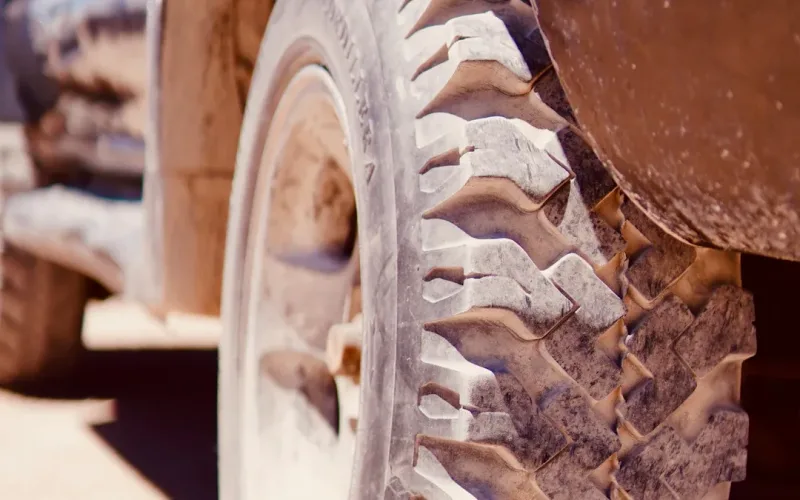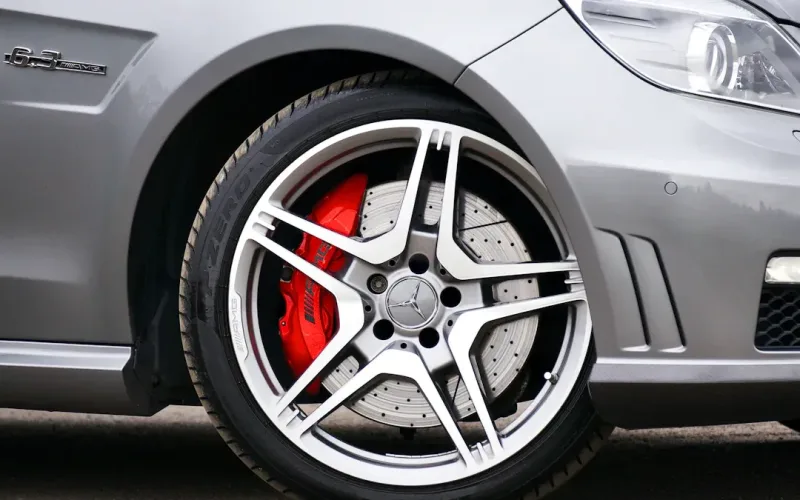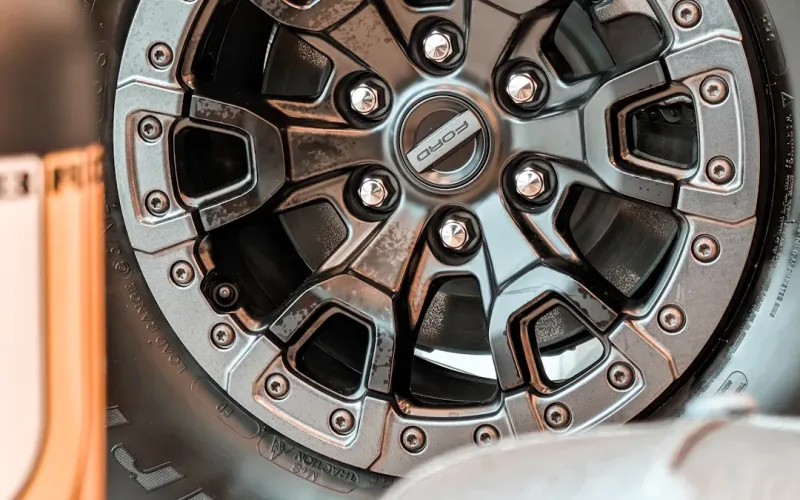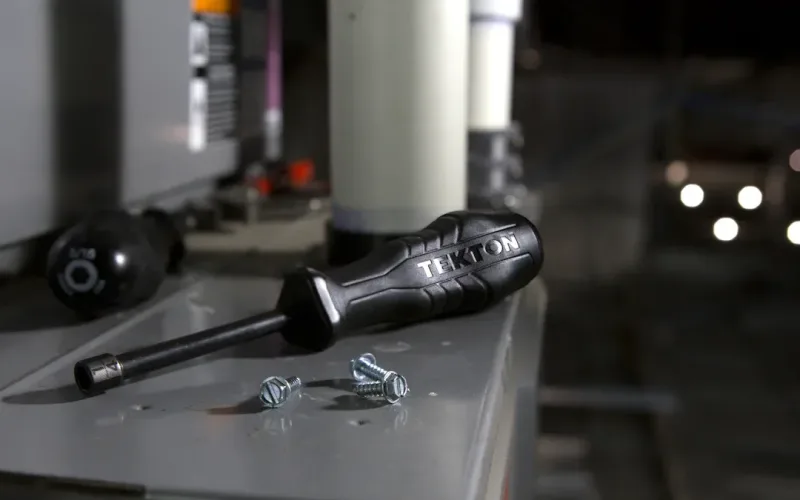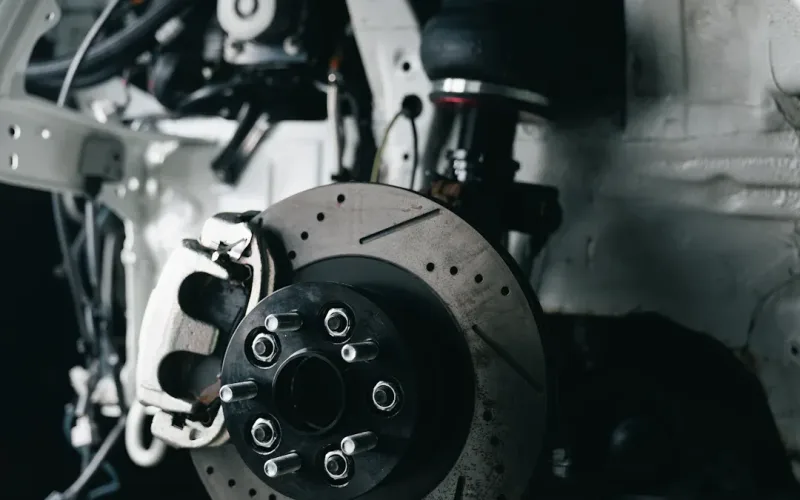

admin1
June 2, 2025
How to Select Adhesive Wheel Weights for Low-Profile Tires

Low-profile tires offer a sleek look and precise handling, but they come with challenges. Their compact design makes them sensitive to weight distribution, which can lead to imbalance if not managed correctly. That’s where adhesive wheel weights step in. These small yet crucial components ensure your tires stay balanced, delivering smoother rides and reducing wear.
Selecting the right wheel weights isn’t just about performance; it’s about safety and savings. Properly balanced tires improve fuel efficiency by up to 4%. Countries like Germany and Finland have seen accident rates drop by as much as 50% during winter thanks to tire regulations, underscoring the importance of wheel weights in maintaining control. Choosing the right adhesive weights keeps your tires healthy and your rides safe.
Understanding Adhesive Wheel Weights

What Are Adhesive Wheel Weights
Adhesive wheel weights are small, flat pieces of material designed to balance your car’s wheels. Unlike traditional clip-on weights, these weights stick directly to the inside of the wheel using a strong adhesive backing. This makes them perfect for low-profile tires, where space is limited, and precision is key.
You might wonder why balance matters so much. When your wheels spin, even a tiny imbalance can cause vibrations. These vibrations can make your ride uncomfortable and even damage your tires over time. Adhesive wheel balance weights solve this problem by evenly distributing weight across the wheel. They’re like the unsung heroes of smooth driving.
These weights come in various sizes and materials, such as steel, zinc, or lead. Each type has its own advantages, but all are designed to stay securely in place, even under tough conditions. Whether you’re driving on a smooth highway or a bumpy road, glued weights ensure your wheels stay balanced.
Benefits of Adhesive Weights for Low-Profile Tires
Low-profile tires look great and improve handling, but they need special care. Adhesive weights offer several benefits that make them the ideal choice for these tires:
Precise Fit: Low-profile tires have less space between the wheel and the tire. Glued weights fit snugly in this tight space without interfering with the tire’s performance.
Improved Balance: These weights provide accurate weight distribution, which reduces vibrations. This means a smoother ride for you and less wear on your tires.
Enhanced Safety: Balanced wheels improve your car’s stability, especially at high speeds. This reduces the risk of accidents caused by uneven tire wear or poor handling.
Durability: The adhesive used in these weights is strong and long-lasting. It keeps the weights in place, even in extreme temperatures or wet conditions.
Aesthetic Appeal: Unlike clip-on weights, adhesive wheel weights stay hidden inside the wheel. This keeps your wheels looking clean and stylish.
Adhesive wheel weights are also easy to install and remove. This makes them a convenient option for anyone who wants to maintain their low-profile tires without hassle. By choosing the right adhesive wheel balance weights, you can enjoy a safer, smoother, and more comfortable driving experience.
Key Factors in Selecting the Right Wheel Weights
Compatibility with Low-Profile Tires
When selecting the right wheel weights for low-profile tires, compatibility is the first thing you should consider. These tires have a unique design with less space between the wheel and the tire. This compact structure makes them more sensitive to weight distribution. Using incompatible wheel balance weights can lead to an unbalanced tire-wheel assembly, causing vibrations, uneven tire wear, and even safety risks.
Adhesive wheel weights are perfect for low-profile tires because they fit snugly within the limited space. Unlike clip-on weights, glued weights adhere directly to the wheel’s surface without interfering with the tire’s performance. This ensures precise weight distribution and keeps your tires balanced.
To ensure compatibility, always check the size and shape of the adhesive weights before installation. Some manufacturers offer specialized designs tailored for low-profile tires. By choosing the right adhesive wheel weights, you can avoid unnecessary damage and enjoy a smoother ride.
Material Options: Steel, Zinc, and Lead
The material of your wheel weights plays a big role in their performance and durability. Steel, zinc, and lead are the most common options, each with its own advantages.
| Material | Density | Durability | Corrosion Resistance | Environmental Impact | Regulatory Compliance |
|---|---|---|---|---|---|
| Lead | High | Moderate | Low | Negative | Stricter regulations |
| Steel | Moderate | High | High | Positive | Increasing compliance |
| Zinc | Comparable to lead | Moderate | Moderate | Positive | High compliance in eco-regions |
Steel adhesive weights are known for their durability and corrosion resistance. They’re a great choice if you drive in areas with harsh weather conditions. Zinc adhesive weights offer similar benefits but with a lighter environmental footprint. Lead adhesive weights, while dense and effective, face stricter regulations due to their environmental impact.
When selecting the right wheel weights, consider your driving environment and local regulations. For example, if you live in an area with eco-friendly policies, zinc or steel might be better options. Always prioritize materials that balance performance, durability, and environmental responsibility.
Adhesive Strength and Durability
Adhesion is the backbone of adhesive wheel weights. Without strong adhesive strength, the weights can fall off, leaving your wheels unbalanced. This is especially problematic for low-profile tires, which rely on precise weight placement.
Modern adhesive wheel weights use advanced adhesives tested under rigorous standards. For example:
| Standard | Description |
|---|---|
| ISO 8510-1 | Method for determining the peel adhesion of self-adhesive tapes at a 180-degree angle. |
| ISO 8510-2 | Method for determining the peel adhesion of self-adhesive tapes at a 90-degree angle. |
| ISO 4578 | Used for determining the peel strength of flexible-bonded-to-rigid test specimen assemblies. |
| ASTM D3330/D3330M | Covers six test methods for measuring the peel adhesion of pressure-sensitive tapes. |
| ASTM D6862 | Covers the determination of the peel resistance of adhesive bonds on products with flexible and rigid adherends. |
These standards ensure that adhesive weights stay in place under extreme conditions, whether you’re driving through heavy rain or scorching heat. Strong adhesion prevents the weights from shifting or detaching, which could lead to an unbalanced tire-wheel assembly.
Durability is equally important. High-quality adhesives resist wear and tear over time, reducing the need for frequent replacements. When selecting adhesive weights, look for products that meet these standards and offer long-lasting performance. This guarantees that your glued weights will remain secure and effective, keeping your wheels balanced and your rides smooth.
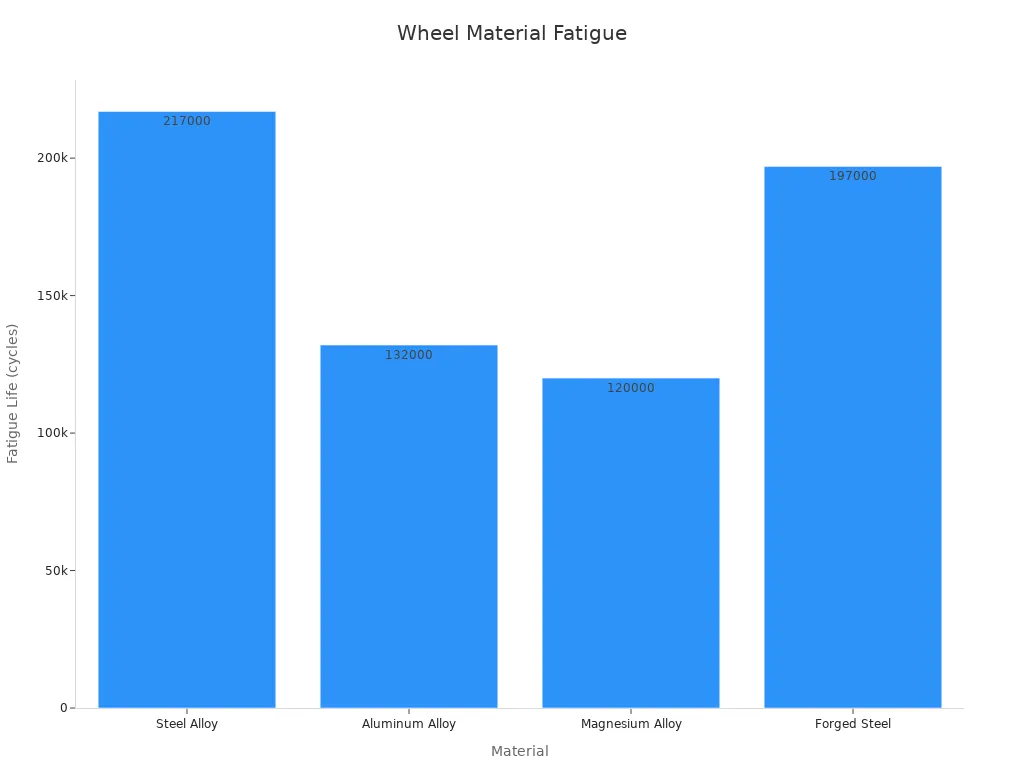
Environmental and Safety Considerations
When choosing adhesive wheel weights, you’re not just thinking about performance. Environmental and safety factors play a big role too. These considerations ensure your choice aligns with regulations and contributes to a safer driving experience.
Eco-Friendly Materials
You’ve probably heard about the push for greener products. Adhesive wheel weights made from eco-friendly materials like zinc or steel are gaining popularity. These materials reduce environmental harm compared to lead, which has been restricted in many regions due to its toxicity. For example, the European Union’s REACH regulation limits the use of heavy metals like lead and mercury. This has encouraged manufacturers to develop safer, non-toxic alternatives.
Steel and zinc weights not only meet these standards but also offer durability and corrosion resistance. By choosing these materials, you’re helping reduce pollution while ensuring your wheel balance weights last longer.
Regulatory Compliance
Different countries have their own rules for automotive products. These regulations aim to protect both the environment and public health. Here’s a quick look at some key guidelines:
| Regulation | Region | Impact on Adhesive Wheel Weights |
|---|---|---|
| REACH | EU | Restricts heavy metals like lead and mercury, prompting non-toxic alternatives. |
| Proposition 65 | US | Requires warning labels for harmful chemicals, leading to safer formulations. |
| Indian Guidelines | India | Targets emissions and waste management, encouraging eco-friendly manufacturing. |
If you live in the U.S., Proposition 65 ensures that products with harmful chemicals come with warning labels. This means adhesive weights sold in the region are safer for you and the environment. In India, guidelines focus on reducing emissions and waste, pushing manufacturers toward eco-friendly production methods.
Safety Benefits
Safety isn’t just about keeping your car balanced. It’s also about protecting yourself and others on the road. Adhesive wheel weights with strong adhesion prevent detachment, which could lead to unbalanced tires and accidents. High-quality adhesives meet strict standards, ensuring they stay in place even under extreme conditions.
Balanced wheels improve handling and reduce vibrations. This makes your ride smoother and safer, especially at high speeds. Plus, using eco-friendly weights means you’re not exposing yourself to harmful substances like lead. It’s a win-win for both safety and sustainability.
Making the Right Choice
When selecting wheel weights, think about the bigger picture. Eco-friendly materials, regulatory compliance, and strong adhesion all contribute to a safer and greener driving experience. By choosing adhesive wheel balance weights that meet these criteria, you’re not just improving your car’s performance—you’re also making a positive impact on the environment and your safety.
Installation Tips for Adhesive Wheel Weights
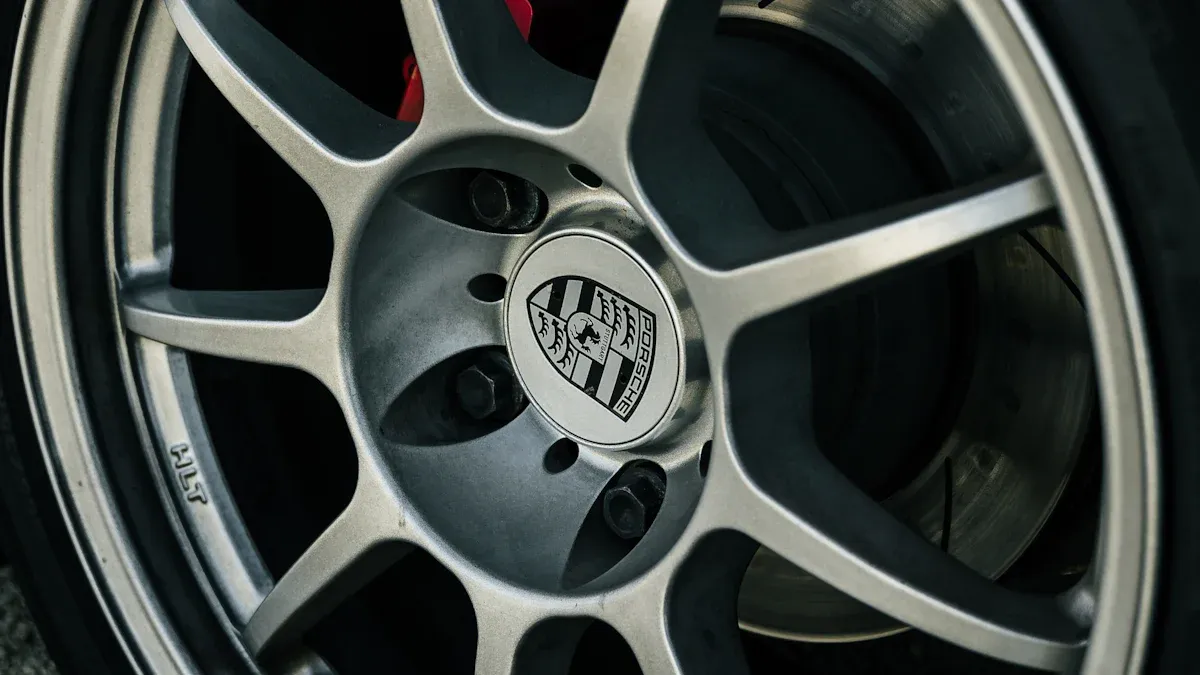
Preparing the Wheel Surface
Before you start mounting adhesive wheel weights, you need to prepare the wheel surface properly. A clean and dry surface ensures strong adhesion and prevents the weights from falling off. Here’s how you can do it:
- Use a degreaser or an alcohol-based cleaner to remove grease, dirt, and moisture from the wheel’s inner surface.
- Wipe the surface with a lint-free cloth to avoid leaving any residue.
- Make sure the wheel is completely dry before proceeding with the installation.
Tip: Avoid using water-based cleaners, as they can leave moisture behind, weakening the adhesive bond.
Taking these steps guarantees a solid foundation for the adhesive weights, making the mounting process smoother and more effective.
Proper Placement of Adhesive Weights
The placement of adhesive wheel weights plays a critical role in balancing your low-profile tires. Incorrect placement can lead to vibrations and uneven tire wear. For optimal results:
- Use tape-on weights for static balancing. Place them at the center mass of the wheel assembly to address minor imbalances.
- For dynamic balancing, apply weights on both the inboard and outboard sides of the wheel. This method ensures stability, especially for high-performance tires.
- Consider tire indexing to align the high and low points of the tire and rim. This reduces vibrations and improves ride comfort.
Proper placement not only enhances balance but also extends the life of your tires, saving you money in the long run.
Ensuring Long-Lasting Adhesion
Strong adhesion is key to keeping your adhesive wheel weights in place, even under tough conditions. Follow these steps to ensure a durable bond:
- Peel off the backing of the adhesive weight carefully to avoid touching the sticky surface.
- Press the weight firmly onto the prepared wheel surface. Apply even pressure across the weight to secure a strong bond.
- Allow the adhesive to set for a few hours before driving. This gives the adhesive time to cure and ensures it stays in place.
| Test Type | Description |
|---|---|
| Systematic Adhesion Durability Tests | Conducted using advanced platforms to evaluate long-term adhesive performance. |
| Experimental Results | Showed strong alignment between theoretical predictions and real-world outcomes. |
Periodic inspections are also essential. Check the weights regularly to confirm they remain securely attached. If you notice any detachment, replace the weights promptly to maintain balance and safety.
By following these installation tips, you’ll enjoy the ease of mounting adhesive wheel weights and ensure your low-profile tires perform at their best.
Maintenance and Inspection of Automotive Wheel Weights
Regular Checks for Adhesive Integrity
Adhesive wheel weights play a vital role in keeping your tires balanced, but they need regular attention to stay effective. Over time, exposure to dirt, moisture, and extreme temperatures can weaken the adhesive bond. You should inspect your automotive wheel weights every few months or after driving in harsh conditions. Look for signs of detachment, such as loose or missing weights. If you notice any issues, replace them immediately to avoid unbalanced wheels.
A quick visual check can save you from bigger problems down the road. Pay close attention to the inner side of the rim, where adhesive weights are usually placed. Keeping the weights secure ensures your tires wear evenly and your rides remain smooth.
Tip: After long drives or exposure to wet weather, take a moment to inspect the adhesive integrity. It’s a small step that can make a big difference.
Rebalancing the Wheels
Rebalancing your wheels is essential for maintaining the performance and longevity of low-profile tires. When your wheels are out of balance, you may feel vibrations or notice uneven tire wear. Regular wheel balance detection can prevent these issues and extend the life of your tires.
- Rebalancing prevents uneven wear, saving you money on replacements.
- It also enhances vehicle safety by improving handling and reducing vibrations.
You should rebalance your wheels every 5,000 to 6,000 miles or whenever you replace a tire. Professional equipment can detect unbalanced positions and determine the exact weight needed. This process ensures your adhesive wheel weights are placed correctly, keeping your tires in top shape.
Preventing Damage During Maintenance
Proper maintenance of adhesive wheel weights requires care and precision. Following a few simple guidelines can help you avoid damage:
- Clean the wheel surface thoroughly. Remove dirt, grease, and rust to ensure proper adhesion.
- Use professional wheel balance detection tools to identify unbalanced areas.
- Place the weights on the inner side of the rim for better protection and aesthetics.
- Press the adhesive weights firmly to avoid bubbles or wrinkles.
- Inspect the weights regularly for looseness or detachment, especially after long trips.
By following these steps, you can maintain the effectiveness of your wheel weights and prevent unnecessary damage. A little effort during maintenance goes a long way in ensuring your tires stay balanced and your rides remain safe.
Choosing the right adhesive wheel weights for your low-profile tires isn’t just a small detail—it’s a game-changer for your car’s performance and safety. Properly selected weights keep your wheels balanced, which minimizes vibrations and improves ride quality. They also enhance stability and traction, especially at high speeds, reducing the risk of accidents.
When making your choice, focus on four key factors: compatibility with your tires, the material of the weights, adhesive strength, and proper installation. Each plays a critical role in ensuring your wheels stay balanced and your tires last longer.
Don’t forget about regular maintenance. Inspect your weights often and rebalance your wheels when needed. These small steps can make a big difference in keeping your car running smoothly. By prioritizing quality and care, you’ll enjoy safer, more comfortable rides every time you hit the road.
FAQ
What makes adhesive wheel weights better than clip-on weights?
Adhesive wheel weights stick directly to the wheel’s surface. They fit snugly in tight spaces, making them ideal for low-profile tires. Clip-on weights can interfere with tire performance, while adhesive weights stay hidden and provide precise balance.
How often should I check my wheel weights?
Inspect your wheel weights every few months or after driving in harsh conditions. Look for loose or missing weights. Regular checks keep your tires balanced and prevent uneven wear.
Can adhesive wheel weights handle extreme weather?
Yes, high-quality adhesive wheel weights are designed to withstand extreme temperatures and wet conditions. Their strong adhesive ensures they stay in place, keeping your wheels balanced no matter the weather.
Are adhesive wheel weights eco-friendly?
Many adhesive wheel weights are made from eco-friendly materials like zinc or steel. These options reduce environmental harm compared to lead weights, which are restricted in many regions due to toxicity.
Do I need professional help to install adhesive wheel weights?
Not necessarily. You can install adhesive wheel weights yourself by cleaning the wheel surface and pressing the weights firmly. However, professional tools ensure precise placement for optimal balance.
